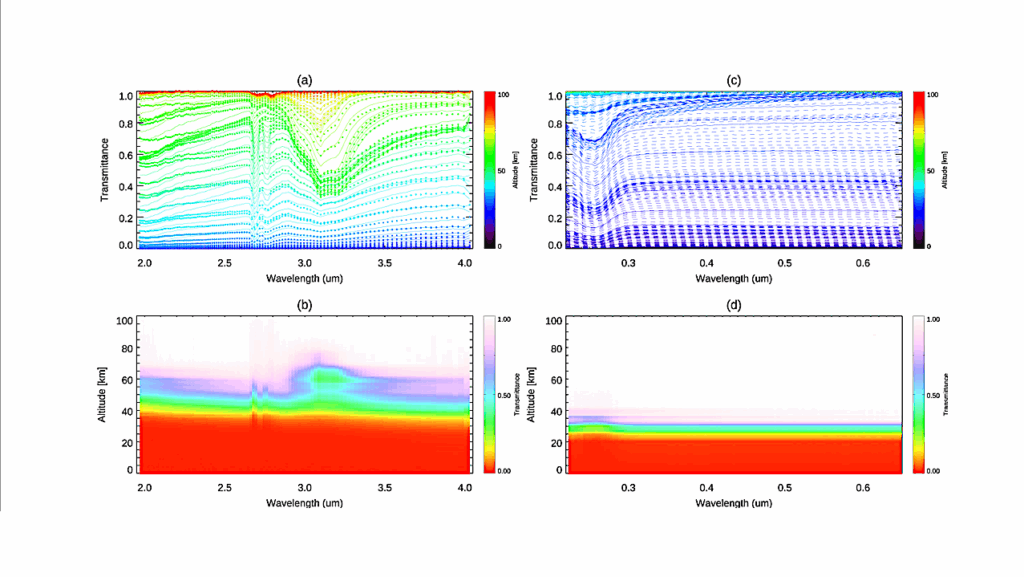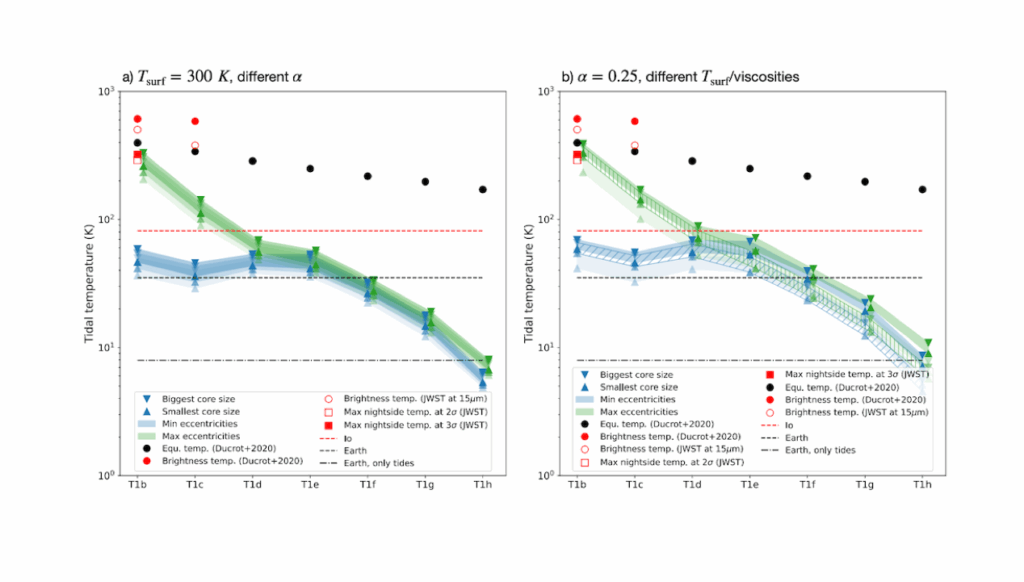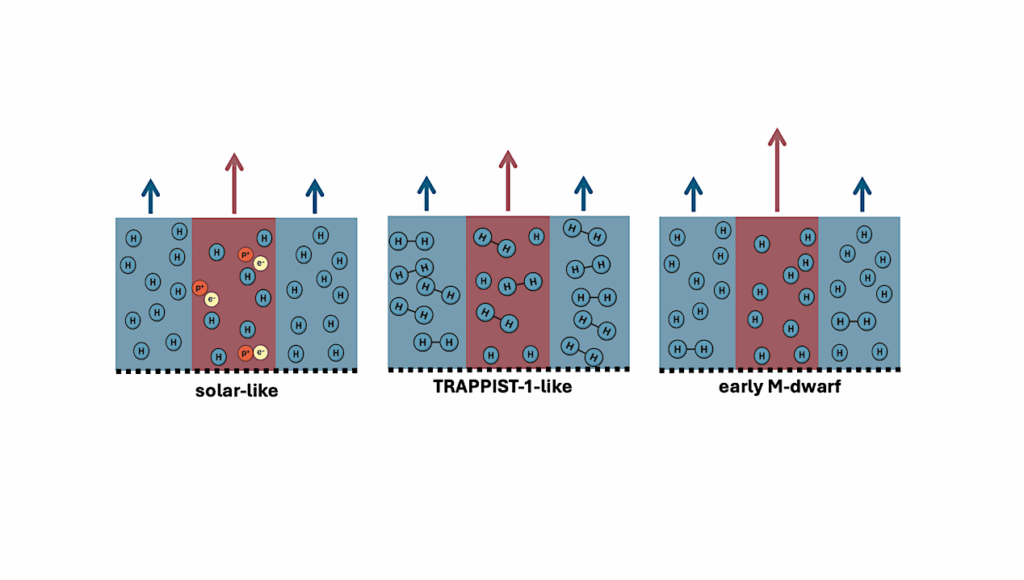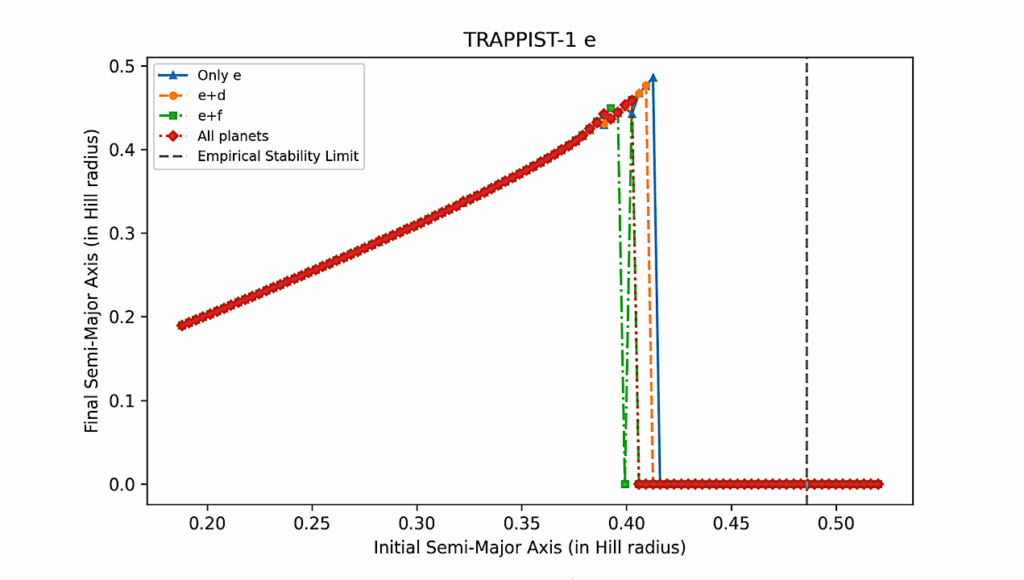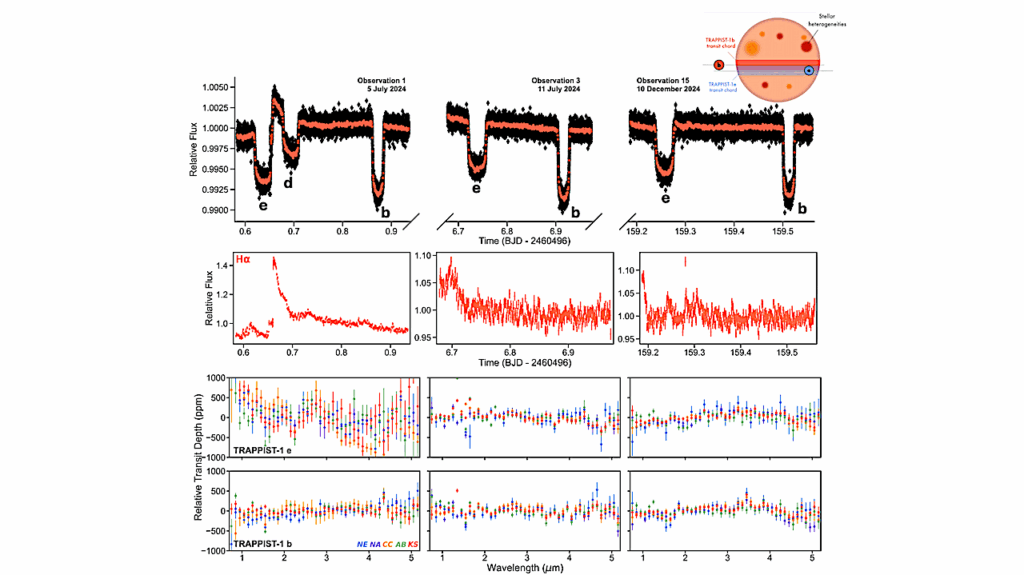A Review Of Possible Planetary Atmospheres In The TRAPPIST-1 System

TRAPPIST-1 is a fantastic nearby (~39.14 light years) planetary system made of at least seven transiting terrestrial-size, terrestrial-mass planets all receiving a moderate amount of irradiation. To date, this is the most observationally favourable system of potentially habitable planets.
Since the announcement of the discovery of TRAPPIST-1 planets in 2016, a growing number of techniques and approaches have been used and proposed to reveal its true nature. Here we have compiled a state-of-the-art overview of all the observational and theoretical constraints that have been obtained so far using these techniques and approaches. The goal is to get a better understanding of whether or not TRAPPIST-1 planets can have atmospheres, and if so, what they are made of. For this, we surveyed the literature on TRAPPIST-1 about topics as broad as irradiation environment, orbital architecture, transit observations, density measurements, stellar contamination, and numerical climate and escape models. Each of these topics adds a brick to our understanding of the likely atmospheres of the seven planets.
We show that (i) HST transit observations, (ii) density measurements, (iii) atmospheric escape modelling, and (iv) gas accretion modelling altogether offer solid evidence against the presence of H2-dominated atmospheres around TRAPPIST-1 planets. This means they likely have either (i) a high molecular weight atmosphere or (ii) no atmosphere at all. There are several key challenges ahead to characterize the bulk compositions of the atmospheres (if present) of TRAPPIST-1 planets. The main one so far is characterizing and correcting for the effects of stellar contamination. Fortunately, a new wave of observations with the James Webb Space Telescope and near-infrared high-resolution ground-based spectrographs on very large telescopes will bring significant advances in the coming decade.
Martin Turbet, Emeline Bolmont, Vincent Bourrier, Brice-Olivier Demory, Jérémy Leconte, James Owen, Eric T. Wolf
Comments: 55 pages, 11 figures, 2 tables. Review article accepted for publication in Space Science Reviews. Part of ISSI special collection on ‘Understanding the Diversity of Planetary Atmospheres’. Abstract abridged to meet ArXiv size limit
Subjects: Earth and Planetary Astrophysics (astro-ph.EP); Instrumentation and Methods for Astrophysics (astro-ph.IM); Solar and Stellar Astrophysics (astro-ph.SR); Atmospheric and Oceanic Physics (physics.ao-ph); Geophysics (physics.geo-ph)
Cite as: arXiv:2007.03334 [astro-ph.EP] (or arXiv:2007.03334v1 [astro-ph.EP] for this version)
Submission history
From: Martin Turbet
[v1] Tue, 7 Jul 2020 10:45:49 UTC (4,316 KB)
https://arxiv.org/abs/2007.03334
Astrobiology


